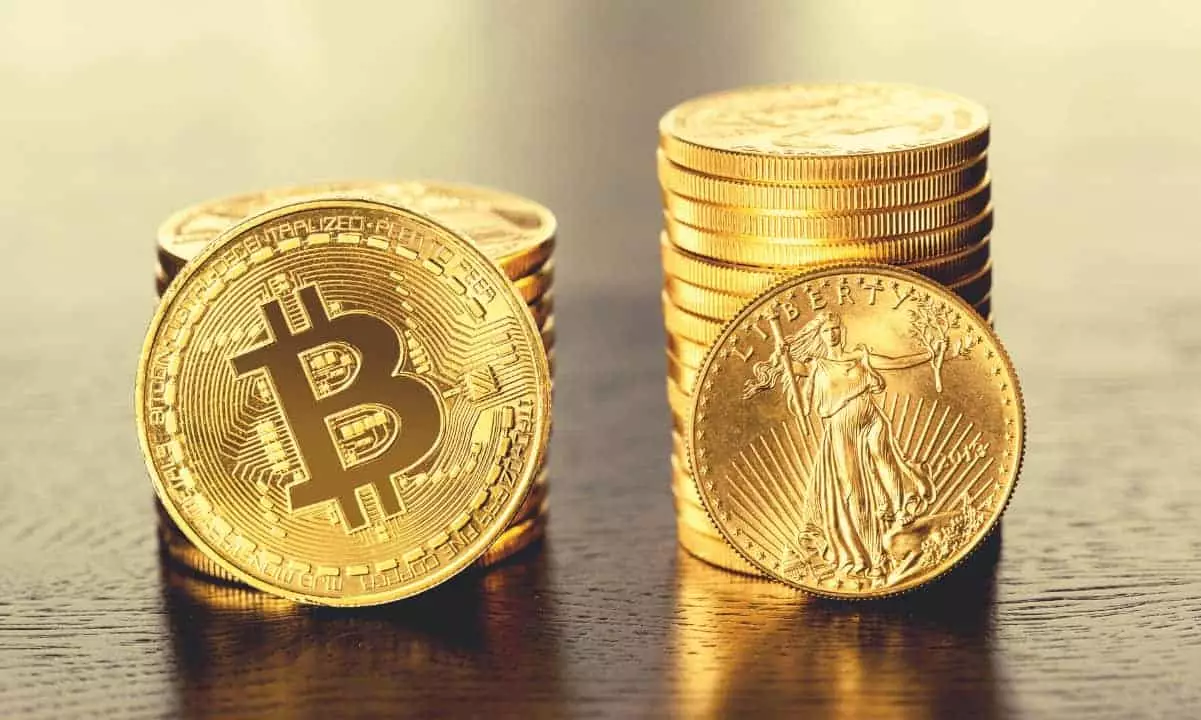In a remarkable turn of events, gold recently skyrocketed past the $3,000 mark, marking an unprecedented moment in the annals of precious metals trading. This surge is more than just a numerical milestone; it encapsulates a significant shift in the psyche of investors grappling with an increasingly unpredictable economic landscape. Analysts have fervently pointed to a potent mix of geopolitical unrest, rampant inflation, and a universal flight to safety as the primary catalysts for this golden ascent. Unlike previous price swings indicative of speculatory market behavior, this rally represents a robust signal reflecting deep-rooted investor sentiment and the inherent volatility that currently defines our global markets.
The Perfect Storm: Factors Influencing Gold’s Rally
The analysts at The Kobeissi Letter have described the recent rally as a result of a “perfect storm,” and rightly so. Various intertwining factors have culminated to create conditions ripe for gold’s meteoric rise. The ongoing geopolitical tensions casting shadows over global markets have spurred fear-driven investment in this traditional safe haven. Paired with inflation rates surging higher than many had anticipated, gold appears to be the best hedge against the depreciating value of fiat currencies. Investors are wary of the conditions, especially in the U.S., where the annual expenditure has escalated to a staggering $7 trillion—the highest since the pandemic.
This spending frenzy not only raises concerns about fiscal sustainability but also casts doubt on the long-term credibility of currency systems that many rely upon for stability. If there’s any lesson to draw from history, it’s that uncertain economic climates often lead investors back to tangible assets that offer intrinsic value—such as gold.
Institutional Demand: A Powerful Underpinning
What amplifies this situation is the unprecedented level of institutional demand for gold. Central banks worldwide have racked up impressive stockpiles, surpassing 1,000 tonnes for three successive years—an indicator that major financial players are losing faith in fiat alternatives. This insatiable demand has tightened supply significantly, creating yet another layer of upward pressure on prices. Moreover, inventories in major vaults have increased by an astonishing 115% in a mere two months, signaling frantic investor demand for physical gold as fears of recession loom larger.
This market behavior is emblematic of a broader trend where traditional institutional frameworks are starting to recognize the failings of contemporary monetary policies and instead pivoting toward time-tested assets. In the face of uncertainty, it seems only logical for institutional investors to act prudently.
Gold vs. Bitcoin: A Battle of Safe Havens
Interestingly, while gold basks in its newfound glory, Bitcoin—often dubbed “digital gold”—is witnessing the exact opposite trajectory. Historical correlations have suggested that gold’s price tends to be inversely related to that of the U.S. dollar. Still, the current scenario has defied such trends, with gold rising even as the dollar remains strong. Peter Schiff, a staunch advocate for gold and a critic of Bitcoin, has been vocal in asserting that gold has emerged as a superior store of value.
Analyzing the BTC price, it’s noteworthy that its purchasing power in terms of gold has diminished, now standing at 27.7 ounces of gold per Bitcoin, a steep decline from 36.3 ounces just a couple of years prior. Such stark contrasts raise questions about cryptocurrency’s designation as a safe asset amid burgeoning volatility. Bitcoin’s performance has aligned closely with tech stocks, further igniting skepticism about its characterization as a stable store of value.
The Dynamics of a Bear Market
As we navigate these tumultuous waters, it’s imperative to question the potential consequences of a bear market on Bitcoin’s future. Should the technology sector see a downturn, Bitcoin may similarly plummet, raising alarms about its viability as a “safe” alternative. Experts at CryptoQuant have already identified bearish trends in Bitcoin’s valuation metrics, which only solidifies the notion that its value does not correlate with that of traditional safe-haven assets like gold.
To make the comparison starker, gold’s wealth-preserving reputation built over 4,000 years stands in stark contrast to Bitcoin’s brief existence. The volatility in crypto markets reflects a broader technological gamble, while gold’s proven durability underscores a serious lesson in asset allocation—especially in times of economic peril. It becomes clear: while innovation in investments is crucial, the wisdom of history cannot simply be ignored.














Leave a Reply